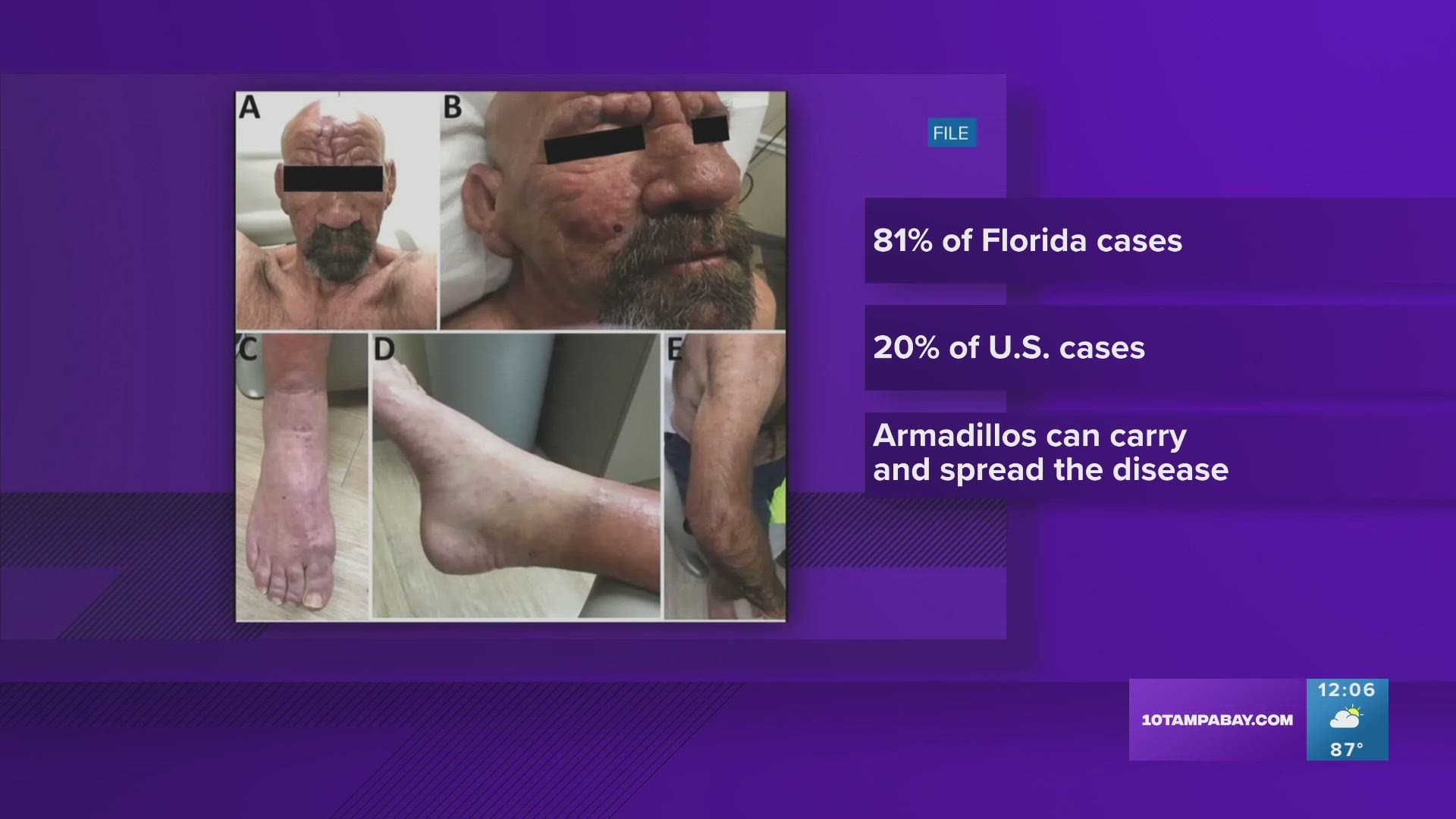FLORIDA, USA — Cases of leprosy, also known as Hansen's disease, have been increasing in Florida.
A recent study from the U.S. Centers for Disease Control said the rare bacterial disease is not only infecting more people in the Sunshine State, but people are catching it locally and without the more traditionally known risk factors at play.
The seeming resurgence of a disease many associate with biblical times and curses has raised a lot of questions and concerns, particularly in Florida which, according to the study, now accounts for one-fifth of the cases reported nationwide.
Here's what we know about the disease and its emergence as a localized illness.
How is leprosy being spread in the U.S.?
The short answer: Scientists aren't completely sure this time around.
According to the CDC, leprosy is a bacterial infection most often spread by prolonged person-to-person contact through respiratory droplets. Transmission takes a longer period of exposure than a typical airborne disease like COVID-19. Cases in the U.S. have always been rare.
In the past, there have been three major risk factors for infection in the U.S.: international travel to countries that have the disease, prolonged contact with people who have immigrated from countries with the disease and contact with animals who carried the bacteria.
The nine-band armadillo, an animal indigenous to the southeastern U.S. and South America, has been considered the most likely carrier of the disease.
This time though, things are a little different. In their study, the CDC pointed to cases in Georgia and Florida where people contracted the disease without being exposed to any of the three risk factors.
That means the disease isn't coming in from other countries, it's being contracted locally. As a result, the CDC is looking into the possibility that there are natural environments in Florida and other southern states that are hospitable to the bacteria that cause the disease.
What happens if I catch it?
Well, you don't immediately start losing limbs or appendages.
Leprosy mainly affects the skin and the nerves, so the early signs will be pretty visible: lesions, bumps and patches of dry skin. You might get painless ulcers on your feet or lumps on your face or around your eyes.
You could also potentially lose your eyelashes or eyebrows. The affected areas on the skin might feel numb or the muscles underneath might feel weakened.
If any of these symptoms happen, it's vitally important to get treatment. Without medical treatment, the symptoms can get much worse, leading to paralysis (especially in the hands and feet), blindness, physical disfigurement, and yes, the shortening of your fingers and toes as your body reabsorbs water and solutes from the infected areas.
Is there a cure?
Since leprosy is a bacterial infection, doctors will typically treat it with a course of multiple antibiotics at once. They do this to prevent the bacteria from becoming antibiotic-resistant, which is a genuine risk since it can take 1-2 years of treatment to fully recover.
Did the CDC issue a travel advisory for Florida because of the disease?
Not exactly. The CDC issues travel advisories to warn about global disease outbreaks or natural disasters. Florida is not currently on their list of travel notices.
Here's what the CDC's report actually said about Florida in light of the possibility that it could be naturally harboring the disease:
"Travel to this area, even in the absence of other risk factors, should prompt consideration of leprosy in the appropriate clinical context. By increasing local physician efforts to report incidence and supporting further research to assess routes of transmission, a congruent effort can be made to identify and reduce spread of the disease."
This means that they want travelers and local doctors to take into account that the disease could be native to parts of the U.S. when diagnosing and contact tracing it.
The CDC considers contact tracing to be crucial in figuring out how the disease is spreading and how to keep it under control, so it's important that people know about the current risks and are prepared to help make sure that new cases are accurately reported.

